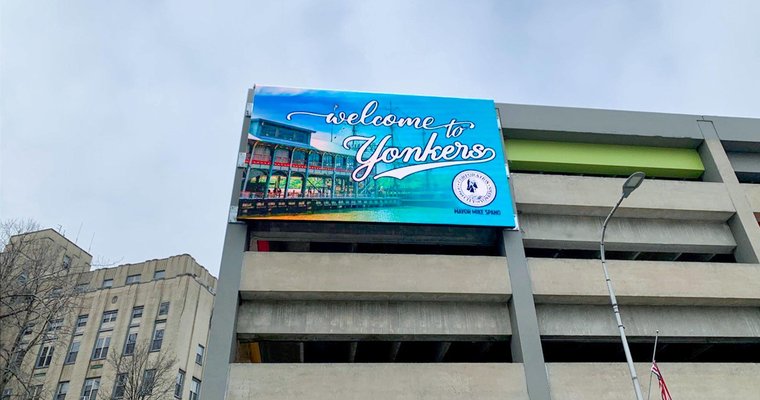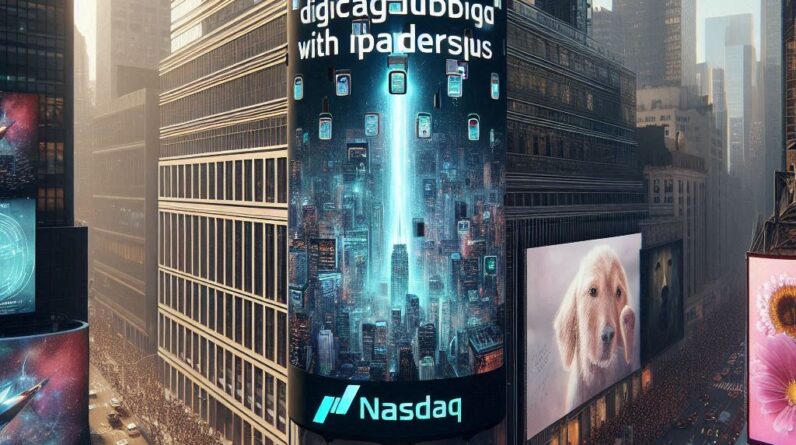
[ad_1]
For brands to truly maximize the potential of their ad budgets, they need to marry the data-driven approach of programmatic DOOH with their powerful creative, argues Matt Oliver, VP of Sales at Hivestack.
 Image provided by Adobe Stock.
Image provided by Adobe Stock.
Out of home advertising and its eye-catching, attention-grabbing potential have made it a longtime staple of a marketer’s channel strategy. Locations like Times Square have become iconic, with audiences from all over the world traveling to view the impressive digital screens that decorate the skyline.
The last few years have seen the creative boundaries of OOH expand further into new territories. Digital out of home screens become more accessible and new creative formats have revolutionized the channel worldwide. From increased use of 3D DOOH promotions and audio OOH in retail environments to growing numbers of smaller DOOH screens in locations such as gyms and even in the back of taxis, the ways audiences can be reached by OOH is ever-broadening.
These creative developments, along with the increasing number of audiences returning outdoors in most markets following the pandemic, saw DOOH spending in the US increase by 36.9% in 2022.
However, one of the biggest developments in DOOH is happening away from the eyes of audiences. Programmatic DOOH is becoming an increasingly prevalent buying method globally, and its strengths go far beyond just the dynamic efficiency of “programmatic” ad buying and delivery. For brands to truly maximize the potential of their ad budgets, they need to marry the data-driven approach of programmatic DOOH with their powerful creative.
Finding the right audience
Programmatic DOOH allows marketers not only to purchase DOOH impressions with the ease and automation of online programmatic, but also enables similarly granular audience targeting options.
Impressions are automatically purchased according to a range of data parameters, including audience concentration, geofenced locations, offline behavior, data triggers or proximity to a point of interest. A combination of anonymized, privacy secure mobile IDs and historic audience data with powerful machine learning allows marketers to identify, target and retarget audiences. Machine learning capabilities allow this data to generate further insights post-campaign, enabling audience movements and patterns to be better predicted.
Marketers can ensure that their promotions are only triggered once a set threshold of their target audience is in a designated location. Creative can therefore be tailored to fit desired audiences, whether it be commuters, those within a certain age bracket, or brand loyalists. Through programmatic DOOH, campaigns shift from a ‘one-to-many’ approach to ‘one-to-select-many’.
Harnessing the power of contextual
OOH and DOOH have always harnessed the impact of contextually relevant advertising. Custom campaign creative near points of interest or during tentpole annual events, such as the Super Bowl or Black Friday, more effectively catch the eye of audiences.
Studies show an average uplift in brain activity of 32% when displaying relevant content in a relevant moment. Promotions can be triggered based on environmental data such as time of day, weather, events, audience density, or even by geofencing specific areas. Contextually relevant creative can then be delivered in-flight to ensure maximum impact. For example, when a traffic jam occurs, creative messaging with longer copy could be deployed. Similarly, screens around a stadium could be targeted with geofencing, and messaging updated to reflect the specific event on that day and to speak to the audience’s social sentiment.
Convenience chain Circle K utilized this technology in its car wash campaign. Different messaging was served in real-time to reflect the local weather in selected locations. At the same time, past and present location data was leveraged to ensure messaging was delivered in locations and at times when a high concentration of targeted consumers were present. Customers that were exposed to these contextually relevant messages were 24% more likely to visit Circle K locations.
Tracking campaign success
Successful campaigns depend on being able to measure their impact and make changes to ensure ever greater impact with audiences. Online, marketers conduct A/B tests, track consumer journeys and judge purchase intent, in order to optimize their advertising efforts. With programmatic DOOH, marketers can gain a similar level of granular insight for their campaigns. Data sets from mobile IDs, visual sensors, QR codes, footfall traffic and more allow for marketers to access a range of metrics, including awareness, consideration, intent, sales lift, true ROI and in-store visitation.
With the range of data available, marketers can pivot campaign budgets to target more effective areas or activate promotions at times that garner better results. Similarly, the flexibility of programmatic DOOH means that campaign creative can be replaced in-flight, allowing for A/B testing, or the announcement of new products or price changes.
A successful DOOH campaign is not just one where the creative turns heads, but one which drives real-world business outcomes. Programmatic DOOH’s data-driven approach ensures that marketers can maximize the potential of their campaigns, making the biggest impact with their target audience within their budget. While direct deals will always have their place, programmatic DOOH offers brands increased flexibility, measurability, and targeting.
[ad_2]
Source link






